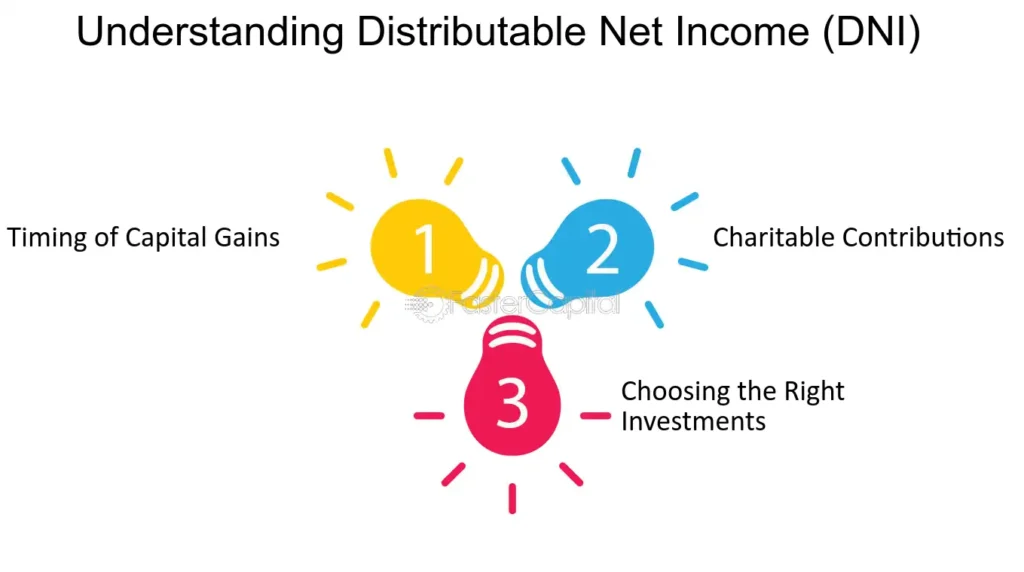Distributable Net Income (DNI) is a key concept in the world of trusts and estates, and understanding it is essential for trustees, beneficiaries, and tax professionals. DNI helps determine the amount of income that a trust or estate must distribute to its beneficiaries and how that income is taxed. In this blog post, we will explore what distributable net income is, how it works, why it is important, and answer frequently asked questions about this critical financial concept.
What is Distributable Net Income (DNI)?
Distributable Net Income (DNI) refers to the maximum amount of income that a trust or estate can distribute to its beneficiaries without incurring additional taxes at the trust or estate level. DNI is used to determine the taxable income that beneficiaries must report on their personal income tax returns.
The concept of DNI ensures that trust or estate income is taxed either at the entity level or at the beneficiary level, but not both. This helps avoid double taxation and ensures that income is taxed at the appropriate level.
How is Distributable Net Income Calculated?
The calculation of DNI involves determining the income that a trust or estate has earned during a given tax year and adjusting it for certain deductions and exclusions. Here are the general steps to calculate DNI:
Determine Total Income: Start by calculating the total income earned by the trust or estate. This includes interest, dividends, rental income, capital gains, and other forms of income.
Subtract Deductions: Subtract allowable deductions, such as administrative expenses, trustee fees, and tax preparation costs. These deductions reduce the overall taxable income of the trust or estate.
Adjust for Capital Gains: Capital gains are typically excluded from DNI unless they are allocated to income or are required to be distributed to beneficiaries. Adjusting for capital gains is an important step in calculating DNI accurately.
Add Tax-Exempt Income: Include any tax-exempt income earned by the trust or estate. Although this income is not subject to federal income tax, it still impacts the calculation of DNI.
The resulting amount is the distributable net income, which determines how much income beneficiaries must report on their individual tax returns.
Importance of Distributable Net Income
Tax Efficiency: DNI helps ensure that income from a trust or estate is distributed and taxed efficiently. By determining how much income can be distributed without additional tax, DNI helps minimize the tax burden on the trust or estate.
Beneficiary Tax Reporting: DNI determines the amount of income that beneficiaries must report on their tax returns. This ensures that the appropriate tax is paid on income received from a trust or estate.
Avoid Double Taxation: By allocating income between the trust or estate and the beneficiaries, DNI helps avoid double taxation, ensuring that income is taxed at only one level.
How Distributable Net Income Works in Practice
In practice, DNI determines how much of the income generated by a trust or estate can be distributed to beneficiaries and how it is taxed. Here’s an example:
Suppose a trust earns $50,000 in income during a tax year, consisting of interest, dividends, and rental income. After subtracting allowable deductions, the trust has $40,000 in distributable net income.
If the trustee decides to distribute $30,000 to the beneficiaries, the beneficiaries will report this amount as income on their individual tax returns. The remaining $10,000 of DNI will either be taxed at the trust level or retained for future distribution.
Frequently Asked Questions about Distributable Net Income
Q1: What is distributable net income (DNI)?
Distributable Net Income (DNI) is the amount of income that a trust or estate can distribute to its beneficiaries without incurring additional taxes at the entity level. It determines the taxable income that beneficiaries must report on their tax returns.
Q2: How is DNI different from taxable income?
DNI and taxable income are related but different concepts. DNI is used to determine the amount of income that can be distributed to beneficiaries, while taxable income is the amount of income subject to tax at the trust or estate level. DNI includes certain adjustments that are not considered in calculating taxable income.
Q3: Why is capital gains usually excluded from DNI?
Capital gains are typically excluded from DNI because they are considered part of the corpus or principal of the trust, rather than income. However, if the capital gains are allocated to income or required to be distributed, they may be included in DNI.
Q4: How does DNI impact beneficiaries?
DNI impacts beneficiaries by determining the amount of income they must report on their individual tax returns. Income distributed from a trust or estate, up to the amount of DNI, is taxable to the beneficiaries.
Q5: Can a trust distribute more than the DNI amount?
Yes, a trust can distribute more than the DNI amount. However, only the amount up to DNI is taxable to the beneficiaries. Any distribution in excess of DNI is considered a distribution of principal and is generally not taxable to the beneficiaries.
Q6: How do deductions affect DNI?
Deductions such as trustee fees, administrative expenses, and tax preparation costs reduce the amount of DNI. By reducing DNI, deductions lower the amount of income that is taxable to beneficiaries.
Q7: Is tax-exempt income included in DNI?
Yes, tax-exempt income is included in the calculation of DNI. Although tax-exempt income is not subject to federal income tax, it still impacts the amount of income that can be distributed to beneficiaries.
Q8: How often is DNI calculated?
DNI is calculated annually, at the end of each tax year, to determine the amount of income that can be distributed to beneficiaries and how it should be taxed.
Q9: What happens if a trust does not distribute all of its DNI?
If a trust does not distribute all of its DNI, the undistributed portion is typically taxed at the trust level. Trust tax rates are often higher than individual tax rates, which is why many trusts aim to distribute as much DNI as possible to minimize taxes.
Q10: Who is responsible for calculating DNI?
The trustee or estate administrator is responsible for calculating DNI. It is important for trustees to work with tax professionals to ensure that DNI is calculated accurately and that distributions are made in compliance with tax regulations.
Conclusion
Distributable Net Income (DNI) is a vital concept for trusts and estates, helping to determine how income is distributed and taxed. By understanding DNI, trustees can manage distributions effectively, beneficiaries can understand their tax obligations, and tax professionals can ensure compliance with tax laws. Proper calculation and distribution of DNI can help minimize tax liabilities and ensure that income is distributed in the most tax-efficient manner.


